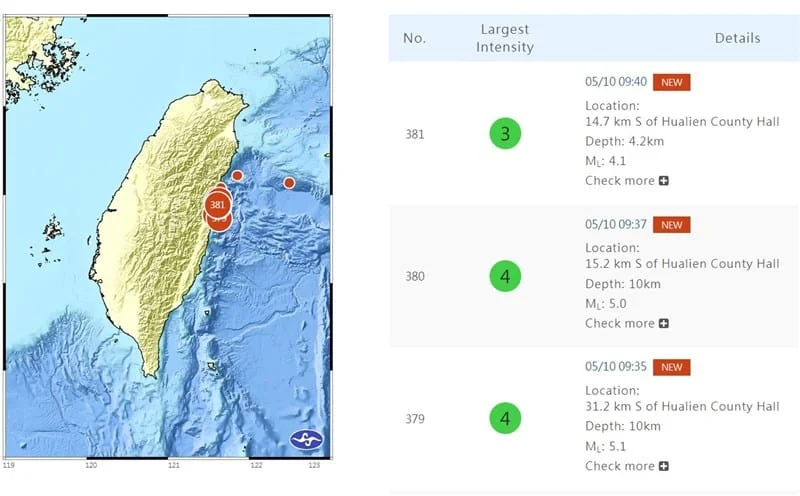According to Taiwan’s meteorological office, there was a high magnitude earthquake off the eastern coast of the country on Friday.
Three earthquakes, with magnitudes ranging from 4.1 to 5.1,and 5.8 hit the seaside area of Hualien County in eastern Taiwan very quickly. This happened on Friday morning.
The Central Weather Administration (CWA) stated that these tremors happened quickly one after the other.
At 9:35 a.m., the first jolt, which was measured at 5.1 magnitude, was felt all over the area. According to data from the CWA, the impact was 10 kilometers below the surface of the water, about 31.2 kilometers south of Hualien County Hall.
The earthquake had the most noticeable effect in Hualien, where it got a grade of 4 on Taiwan’s 7-level intensity scale, showing how it really affected the people who lived there.
Soon after, at 9:37 a.m., a second quake with a magnitude of 5.0 happened. It started in the sea about 15.2 kilometers south of Hualien County Hall and went down to the same depth of 10 kilometers. It was as strong as the last quake, which was recorded as a 4 in Hualien.
As the series continued, at 9:40 a.m., a third quake with a magnitude of 4.1 hit. Its core was like the others’: it was offshore, about 14.7 kilometers south of Hualien County Hall, and only 4.2 kilometers deep.

Although it was only a 3 on the Richter scale in Hualien, there were no reports of damage or injuries right away after these earthquakes.
Even though the quake was very strong, there was no major damage found right away. From its location off the coast of Hualien county, the quake’s impact could be felt in the busy capital city of Taipei.
With its base 10 kilometers below the Earth’s surface, the quake’s effects were felt over a large area, showing how vulnerable Taiwan is to these kinds of natural disasters.
This new event adds to the recent seismic activity in Taiwan. Since a deadly 7.2 magnitude earthquake hit Hualien last month and killed 17, about 1,400 aftershocks have been recorded.
Because Taiwan is located where two tectonic plates meet, it is still vulnerable to earthquakes. This is a fact of geography that has caused a lot of damage over the years.
The 2016 quake in southern Taiwan, which killed over 100 people, and the terrible 7.3-magnitude quake in 1999, which killed over 2,000, are stark memories of how hard the country has to work to protect itself from nature’s terrible forces.
 Twitter
Twitter Facebook
Facebook